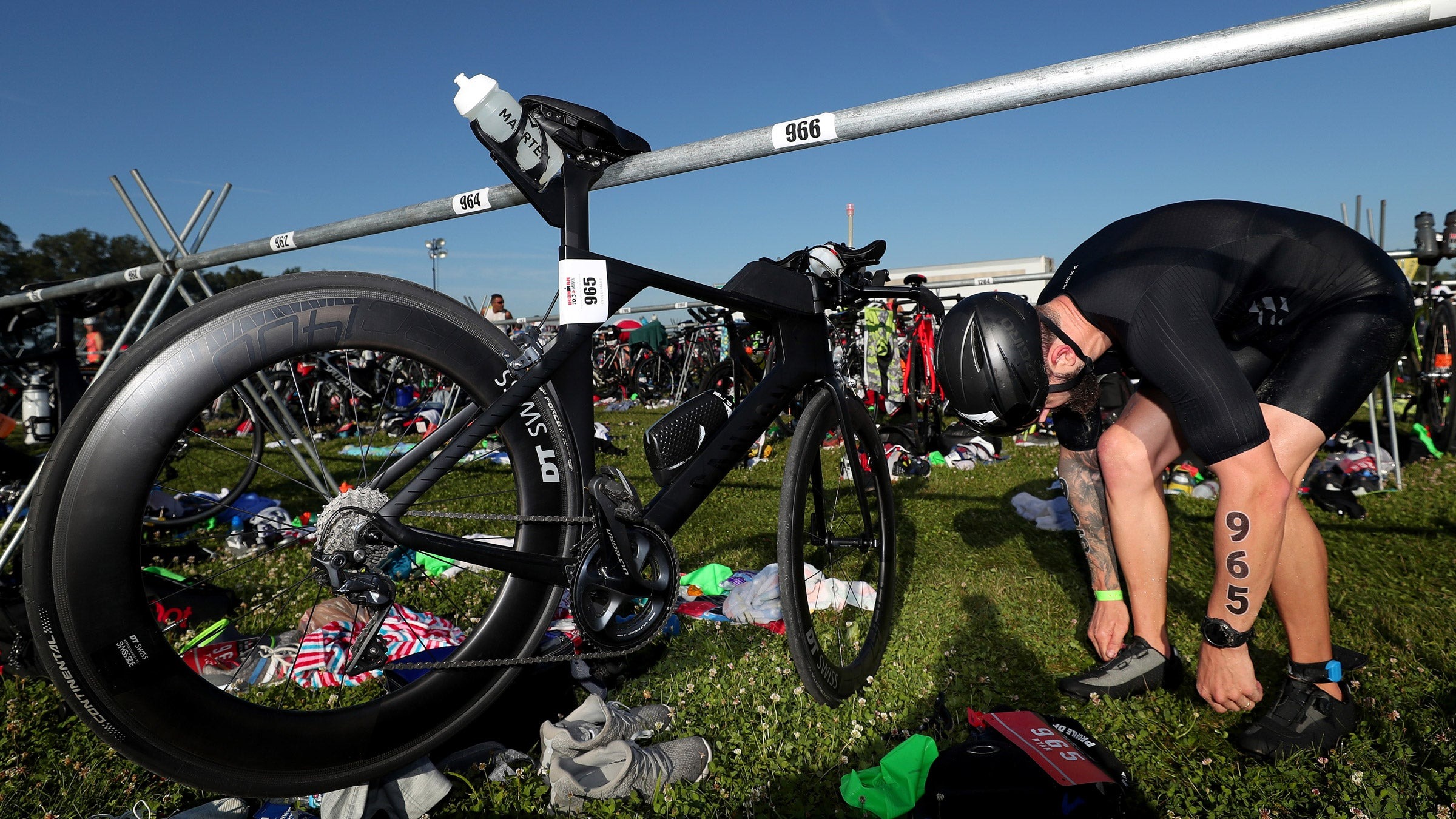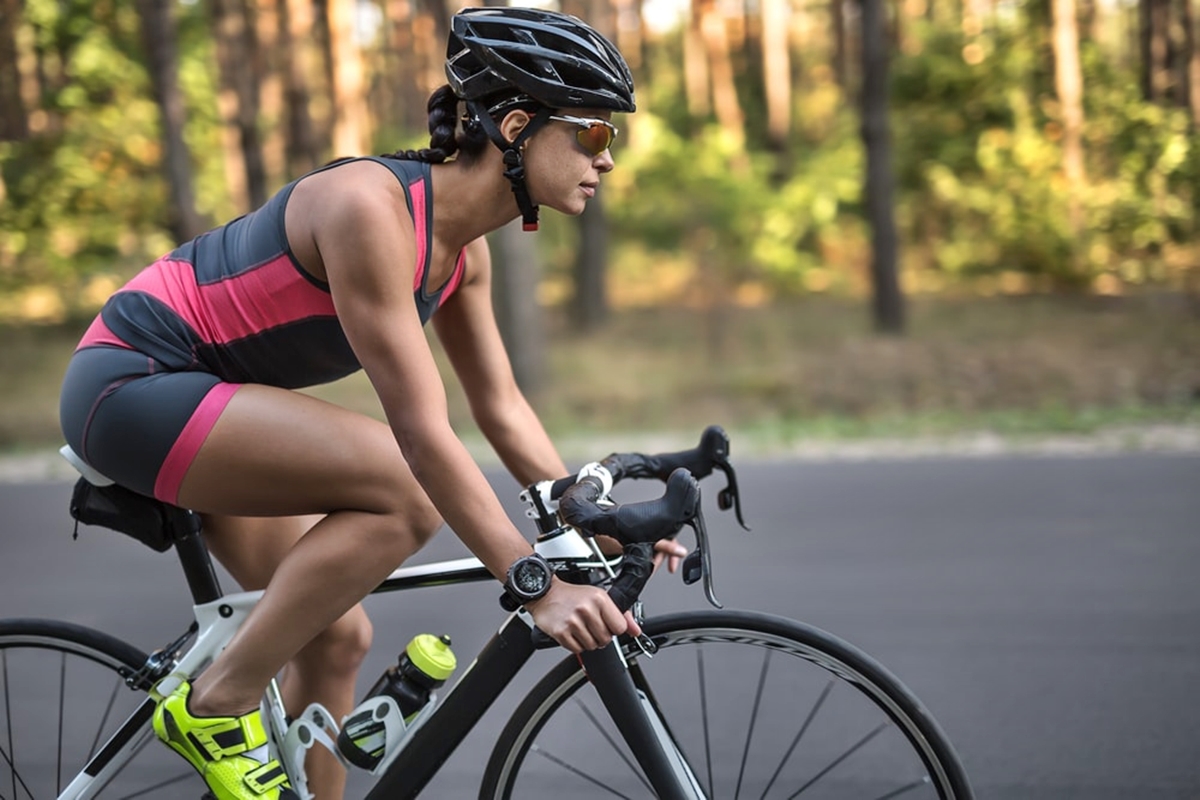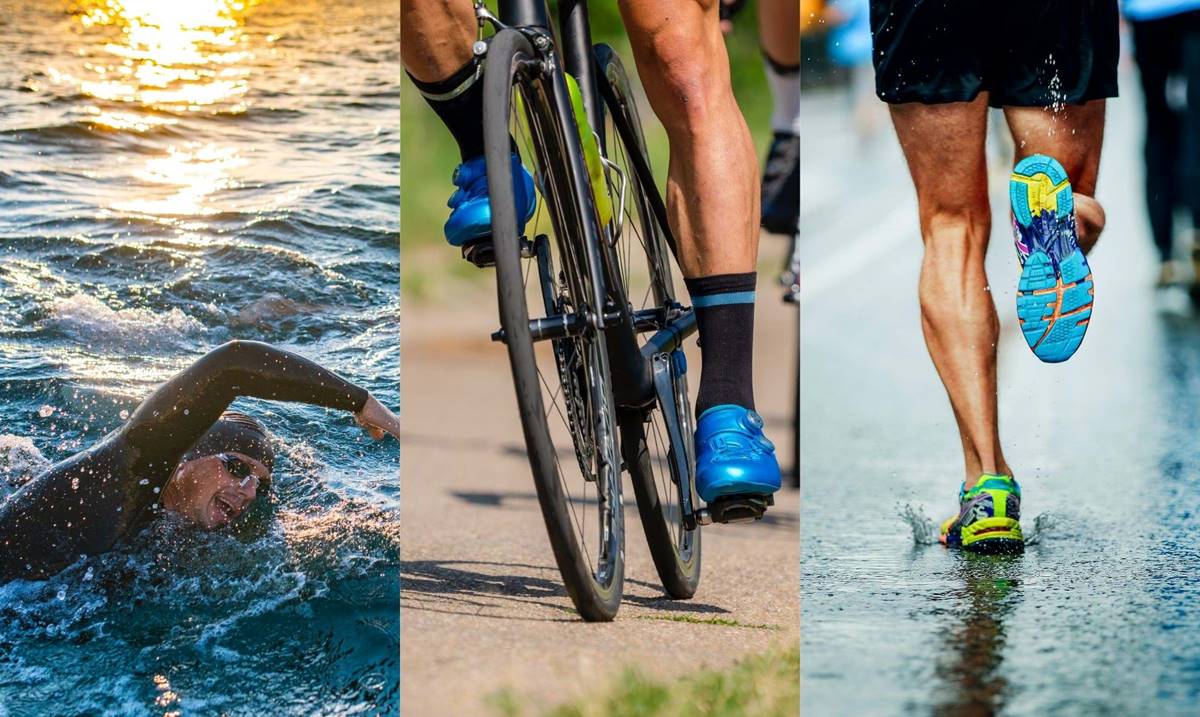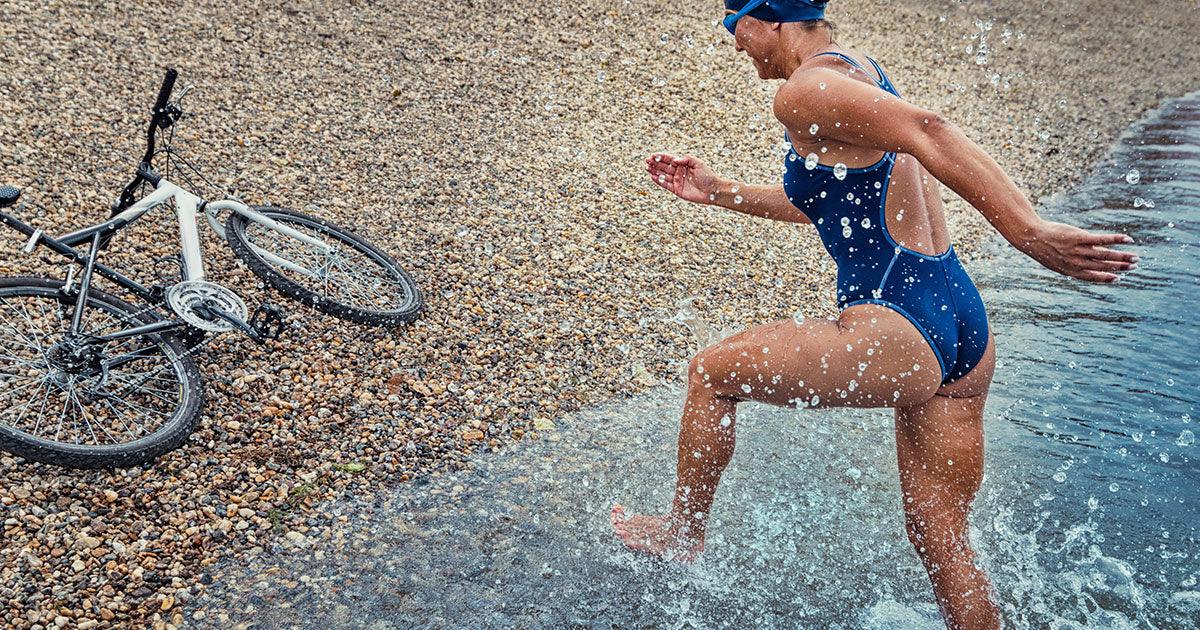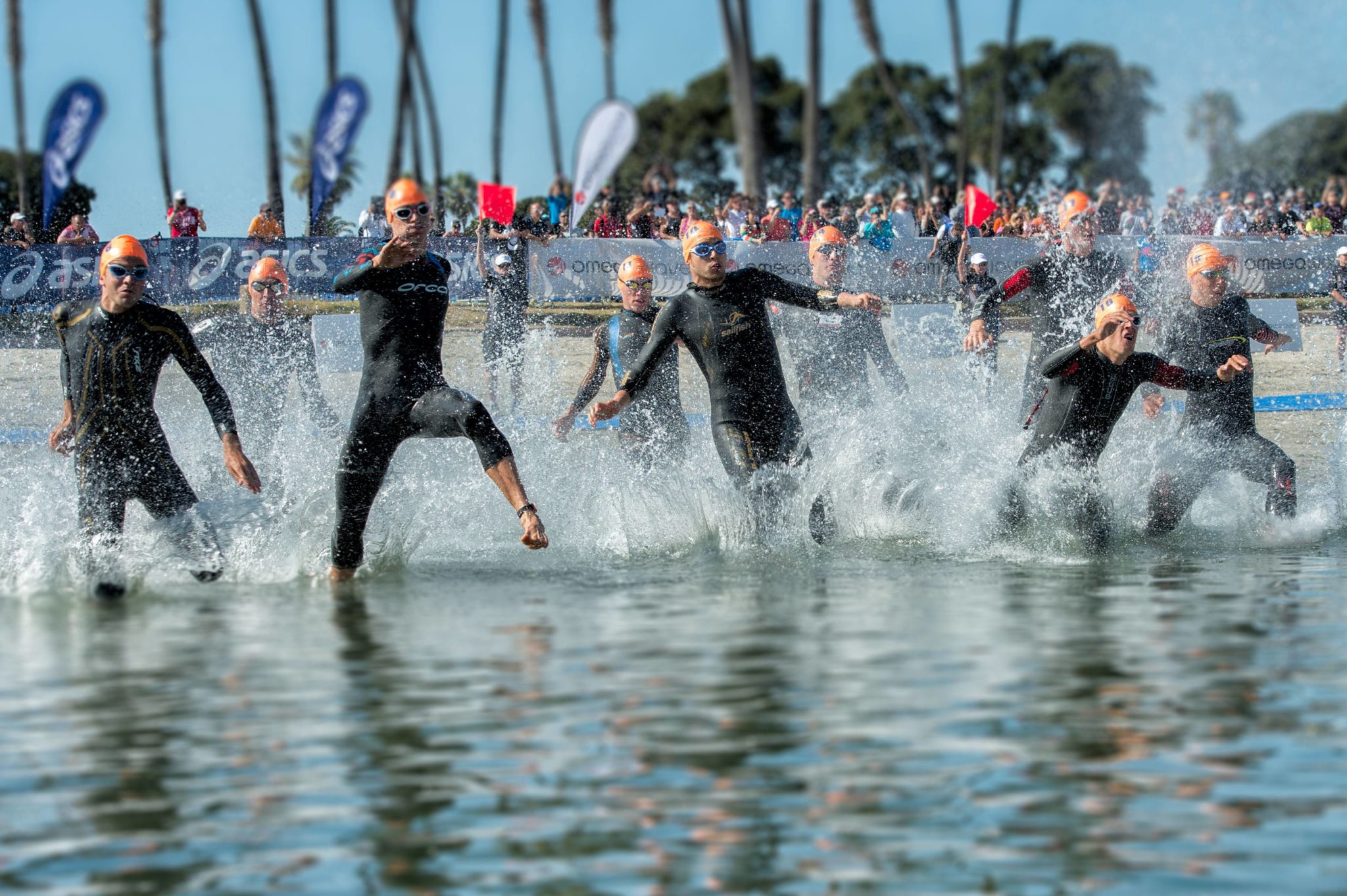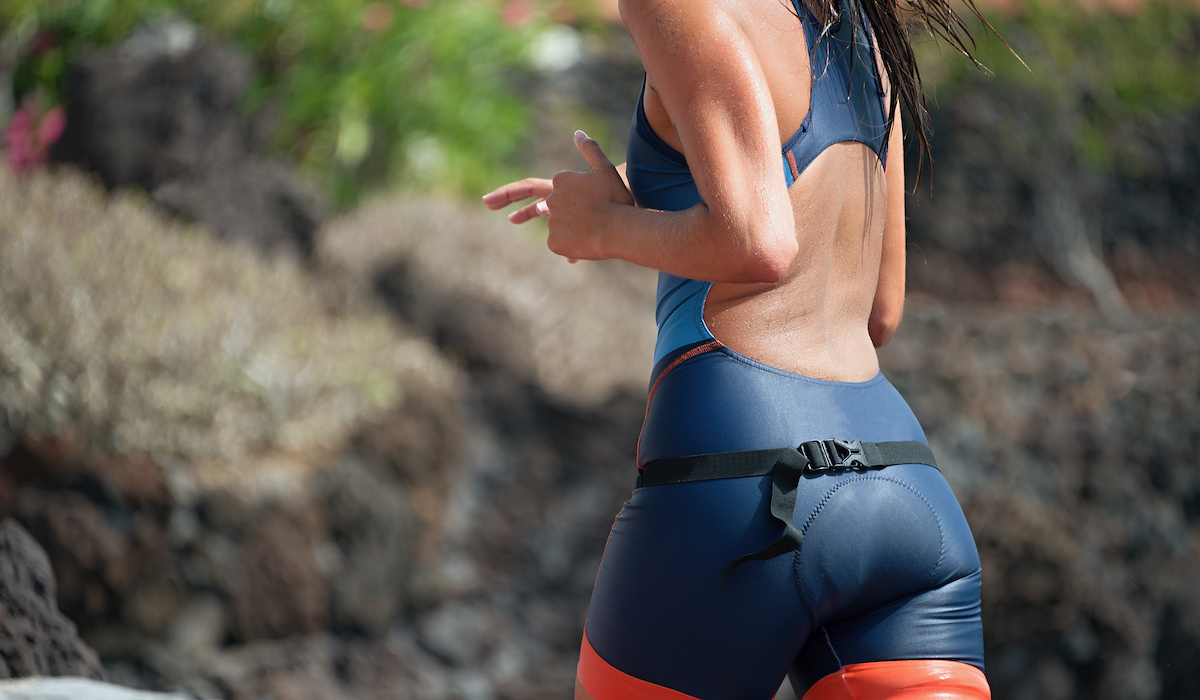

Featured
What Is A Triathlon Race Belt
Modified: August 19, 2023
Discover the benefits of using a triathlon race belt, and why it's a must-have accessory for featured athletes. Simplify transition times with this versatile and practical gear.
Introduction
Triathlon is a demanding and exhilarating sport that combines swimming, cycling, and running into one challenging race. Athletes push their physical limits as they transition from one discipline to another. To ensure a smooth transition, efficiency is key. That’s where a triathlon race belt comes into play. This essential piece of equipment is designed to securely hold your race number without compromising your performance.
In this article, we will explore the ins and outs of a triathlon race belt, highlighting its purpose, components, and benefits. Additionally, we’ll provide some insights on how to wear a triathlon race belt correctly and tips for choosing the right one for your needs.
Whether you’re a seasoned triathlete or a beginner looking to take on your first triathlon, understanding the importance of a race belt will undoubtedly enhance your race experience. So, let’s dive in and learn more about this essential piece of gear.
Definition of a Triathlon Race Belt
A triathlon race belt is a stretchable and adjustable belt that is worn around the waist during a triathlon race. It is specifically designed to securely hold a participant’s race number. The belt consists of a thin strap made of elastic material, often with a buckle or clip at the front, allowing for easy adjustment and attachment of the race number. Some race belts also come with additional features such as gel loops or pockets to carry energy gels or nutritional supplements.
One of the key aspects of a triathlon race belt is its versatility. It is designed to be worn comfortably across all three disciplines of the race – swimming, cycling, and running. Unlike traditional safety pins or adhesive stickers, which can damage clothing or require constant readjustment, a race belt provides a hassle-free and efficient way to display your race number throughout the event.
The race number is typically composed of a lightweight and waterproof material. It often includes the participant’s unique identification number, event branding, and sometimes sponsor logos. The number needs to be prominently displayed on the front or back of the athlete’s body for easy identification by race officials, spectators, and photographers.
Overall, a triathlon race belt serves as a practical solution to securely attach and display the race number, allowing athletes to focus on their performance and transitions without the worry of damaging their race gear or having to constantly adjust their number during the race.
Purpose of a Triathlon Race Belt
The primary purpose of a triathlon race belt is to securely hold and display a participant’s race number. By attaching the race number to the belt, athletes can easily transition between the different legs of the race without the need for safety pins or adhesive stickers that can damage their clothing or cause distractions during the race.
During a triathlon, athletes must switch from swimming to cycling and then to running. These transitions are time-sensitive, and every second counts. With a race belt, athletes can quickly and effortlessly move from one discipline to another, without having to fuss with their race number. The elastic strap allows for easy adjustment and a secure fit, ensuring that the number stays in place throughout the race.
Furthermore, a triathlon race belt provides a comfortable and non-restrictive way to wear the race number. This is especially important during the cycling and running portions of the race when participants need to move freely without the number getting in the way. The elastic material of the belt stretches to accommodate different waist sizes and provides a snug fit, preventing the number from flapping or bouncing during the race.
In addition to holding the race number, some triathlon race belts come with additional features such as gel loops or pockets. These allow athletes to conveniently carry energy gels or nutritional supplements during the race, providing a quick and accessible fuel source to sustain their performance.
Overall, the purpose of a triathlon race belt is to simplify the race experience for participants. By providing a secure and convenient way to attach and display the race number, it allows athletes to focus on their performance and transitions, ensuring a smoother and more efficient race.
Components of a Triathlon Race Belt
A triathlon race belt consists of several key components that work together to provide a secure and comfortable way to hold and display a participant’s race number. Let’s take a closer look at these components:
- Elastic Strap: The elastic strap is the main component of the race belt. It is made of stretchable and adjustable materials that allow the belt to fit a range of waist sizes. The elasticity of the strap ensures a snug and secure fit, preventing the race number from moving or falling off during the race.
- Buckle or Clip: At the front of the race belt, there is usually a buckle or clip mechanism. This allows for easy adjustment and fastening of the belt around the waist. The buckle or clip provides a secure closure, ensuring that the belt stays in place throughout the race.
- Race Number Attachment Points: The race belt features multiple attachment points, typically located at the front or back. These attachment points are designed to hold the race number securely in place. They may consist of small loops or hooks that allow for easy threading or clipping of the race number.
- Optional Gel Loops or Pockets: Some race belts come with additional features such as gel loops or pockets. These are designed to provide convenient storage for energy gels or nutritional supplements. The gel loops or pockets ensure that the fuel source is easily accessible during the race, allowing athletes to replenish their energy without interrupting their performance.
It’s important to note that the components of a triathlon race belt may vary between different brands and models. Some race belts may have additional features or enhancements to further enhance the convenience and functionality for athletes.
By understanding the components of a triathlon race belt, athletes can choose a belt that suits their needs and preferences. Whether it’s the adjustability of the strap, the type of buckle or clip, or the presence of additional features like gel loops, each component plays a role in providing a secure and comfortable race experience.
How to Wear a Triathlon Race Belt
Wearing a triathlon race belt correctly is essential to ensure a secure and hassle-free race experience. Here’s a step-by-step guide on how to properly wear a triathlon race belt:
- Preparation: Before the race, make sure your race number is securely attached to the race belt. Verify that the attachment points are properly threaded or clipped to hold the race number in place.
- Positioning: Place the race belt around your waist, positioning it on top of your triathlon clothing or wetsuit (if applicable). The buckle or clip should be at the front, facing outward for easy adjustment.
- Adjustment: Fasten the buckle or clip, ensuring a snug and comfortable fit. The elastic strap should be tight enough to hold the race number securely in place but without causing discomfort or restricting your movement.
- Orientation: Check that the race number is properly oriented for easy visibility. Most commonly, the race number is positioned at the front of the body, but race rules may vary. Make sure the number is facing forward and centered, ensuring it is clearly visible to race officials and spectators.
- Double-Checking: Give the race belt a gentle tug to confirm that it is securely fastened and the race number is firmly attached. This will help prevent any unexpected movement or detachment during the race.
- During the Race: Throughout the race, pay attention to the positioning of the race belt and the race number. If you notice any slippage or discomfort, take a moment during a transition or a suitable break to readjust or tighten the belt.
- Post-Race: Once you have completed the race, carefully remove the race belt, taking care not to damage the race number. If necessary, untie or unclip any attachments and store the race belt for future use.
By following these steps, you can ensure that your race belt is properly worn and the race number stays in place throughout the race. Remember to practice wearing the race belt during your training sessions to familiarize yourself with the process and make any necessary adjustments beforehand.
Benefits of Using a Triathlon Race Belt
Using a triathlon race belt offers numerous benefits for athletes participating in triathlon races. Here are some key advantages of using a race belt:
- Efficiency: A race belt allows for quick and easy transition between the swim, bike, and run legs of a triathlon. Athletes can simply secure the belt around their waist, eliminating the need for time-consuming safety pins or adhesive stickers. This saves valuable time and energy, allowing athletes to focus on their performance.
- Comfort: Unlike safety pins or adhesive stickers, which may cause discomfort or damage clothing, a race belt provides a comfortable way to wear and display the race number. The elastic strap offers a snug fit without restricting movement, reducing the risk of chafing or irritation during the race.
- Visibility: By securely holding and positioning the race number, a race belt ensures that the number is clearly visible to race officials, spectators, and photographers. This enhances safety and allows for accurate identification of athletes, particularly during crowded races or when passing through checkpoints.
- Flexibility: The elastic strap of a race belt can accommodate different waist sizes, making it suitable for a wide range of athletes. This versatility allows for easy sharing of race belts among teammates or using the same belt for different events.
- Convenience: Some race belts come with additional features such as gel loops or pockets, providing a convenient solution for carrying energy gels or nutritional supplements during the race. This ensures easy access to fuel sources, enabling athletes to maintain their energy levels throughout the demanding triathlon.
- Durability: Triathlon race belts are designed to withstand the rigors of the race. They are typically made of durable and water-resistant materials, ensuring their longevity even in wet or challenging race conditions.
- Reusability: A race belt can be used for multiple triathlon races, making it a cost-effective investment. As long as the race number is securely attached and the belt is well-maintained, it can be used season after season, eliminating the need to purchase new race number attachments for each race.
Overall, using a triathlon race belt streamlines the race experience, enhances comfort and visibility, and offers added convenience and flexibility for athletes. By utilizing this simple yet effective piece of equipment, triathletes can optimize their performance and fully enjoy the race without the worry of race number mishaps or discomfort.
Tips for Choosing a Triathlon Race Belt
Choosing the right triathlon race belt is important to ensure a comfortable and reliable race experience. Here are some tips to consider when selecting a race belt:
- Adjustability: Look for a race belt with an elastic strap that offers adjustable sizing. This will allow you to customize the fit to your waist size, ensuring a snug and secure hold.
- Durability: Opt for a race belt that is made from durable materials, such as nylon or spandex. These materials are resistant to wear and tear and can withstand the demands of triathlon races.
- Attachment Mechanism: Consider the type of attachment mechanism used to hold the race number. Look for a race belt that offers secure attachment points, such as loops or hooks, to prevent the number from falling off or shifting during the race.
- Comfort: Pay attention to the design and construction of the race belt. Look for features like seamless stitching and soft edges that minimize the risk of chafing or irritation during the race.
- Additional Features: Assess your needs and preferences regarding additional features. Some race belts come with gel loops or pockets that provide convenient storage for energy gels or other essentials. If this is important to you, choose a race belt that offers these extras.
- Visibility: Check if the race belt has reflective elements or bright colors that enhance visibility, especially when running in low-light conditions. This will help improve safety during the race.
- Reviews and Recommendations: Read reviews and seek recommendations from fellow triathletes or online forums. Hearing about the experiences of others can help you make an informed decision about which race belt to choose.
- Price: Consider your budget when selecting a race belt. While quality is important, there are various options available at different price points. Find a balance between affordability and functionality.
By keeping these tips in mind, you can select a race belt that meets your specific needs and enhances your race experience. Remember to try out the belt during your training sessions to ensure a comfortable fit that will support you throughout the entirety of your triathlon events.
Conclusion
A triathlon race belt is a small but essential piece of equipment that offers numerous benefits to athletes participating in triathlon races. By securely holding and displaying the race number, a race belt streamlines the race experience, allowing athletes to focus on their performance and transitions without the worry of their race number falling off or causing discomfort.
Throughout this article, we have explored the definition of a triathlon race belt, its purpose, components, and how to properly wear it. We have also highlighted the benefits of using a race belt, including increased efficiency, comfort, visibility, and convenience. Additionally, we provided tips for choosing the right race belt, emphasizing factors such as adjustability, durability, comfort, and additional features.
Whether you’re a seasoned triathlete or a beginner looking to take on your first triathlon, investing in a high-quality race belt will undoubtedly enhance your race experience. It will provide a secure and comfortable way to display your race number while allowing for easy transitions between the swim, bike, and run legs of the race.
Remember, choosing the right race belt is crucial. Consider factors such as adjustability, durability, comfort, additional features, and price when making your selection. Take the time to read reviews and seek recommendations from fellow triathletes to ensure that you find a race belt that suits your specific needs.
By incorporating a triathlon race belt into your gear, you can optimize your performance, improve race efficiency, and enjoy a more seamless and enjoyable triathlon experience. So, strap on your race belt, lace up your shoes, and get ready for an exhilarating race!
